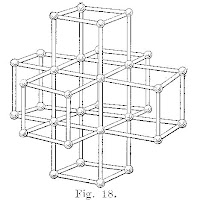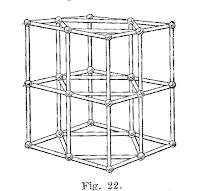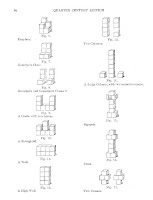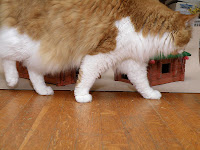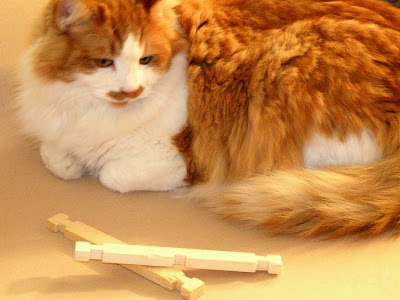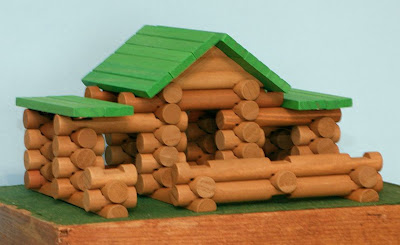 I am often thankful for bridges, and often thankful for building toys. They are good therapy.
I am often thankful for bridges, and often thankful for building toys. They are good therapy.Holidays are stressful, so I have been doing a lot of the things that help me cope. Block Play is an important part of that, and I have been building quite a few small constructions - with Lincoln Logs or Tinker Toys. Haven't much felt like photographing and blogging them though.
This afternoon I thought I would see if I could build a bridge with the Roy Toy Deluxe set. 100% American made, and located in Machias, Maine, Roy Toys seemed a better choice for Thanksgiving than one or another of the other classic American toys, now somehow made in China.
My inspiration for the bridge was a blurred & almost indecipherable image I grabbed off the Internet a while back, showing an instruction sheet from some old construction system. Maybe Miniature Timbers? Or maybe an older set of Frontier Logs.
By the time I got it working with the Roy Toy pieces, it had strayed a long way from the long-unconsulted inspiration - which is how inspiration is supposed to work.
The bridge turned out well, I believe, though there were some photographic issues, which aren't entirely rectified in the image above. At least it shows that you can go a long way from the provided examples with this set.
I hope your Thanksgiving is, or has been, a pleasant one.
We'll be leaving soon to join my brother, sister-in-law, and mom. It may be Thanksgiving dinner with a Spanish flavor, since he owns a group of Spanish food stores, and has written a Spanish cookbook. Or maybe it will be more French, to go with his latest venture. Or maybe it will be more toward family tradition. He's an excellent cook, so it will turn out well, whichever option.
I'm taking along a couple of pocketable building sets. Maybe I'll sneak off for a bit like I used to at grandma's house.
Good Block Play.
I'm not going shopping on Black Friday, not at home, not on Amazon - but Amazon would like me to link to their Black Friday weeklong deals, and pay me a small commission for any business I send them. Might help me buy something new to blog.






